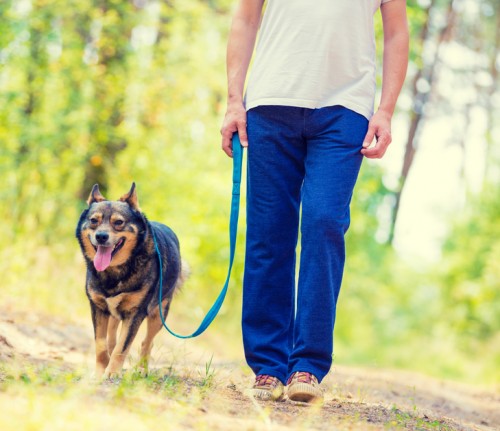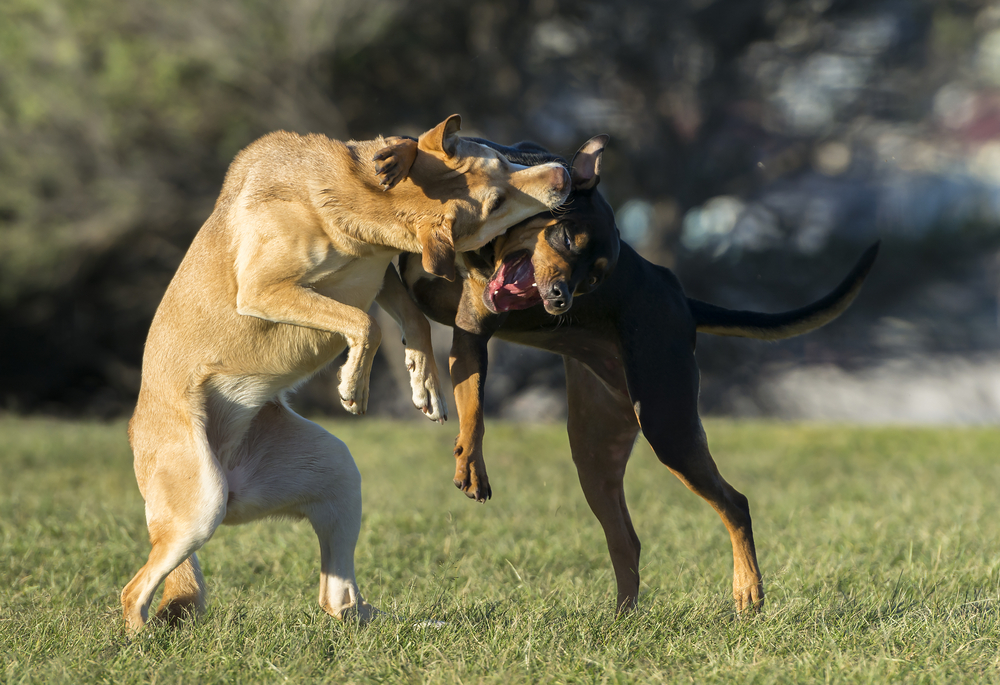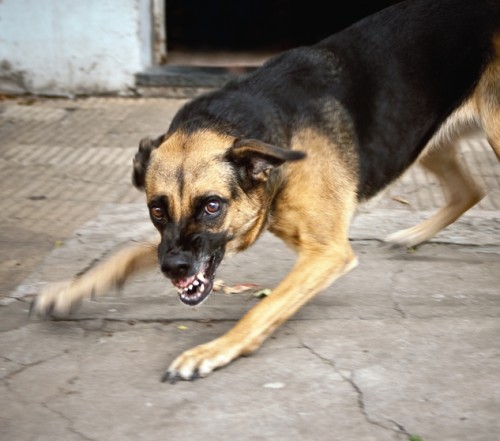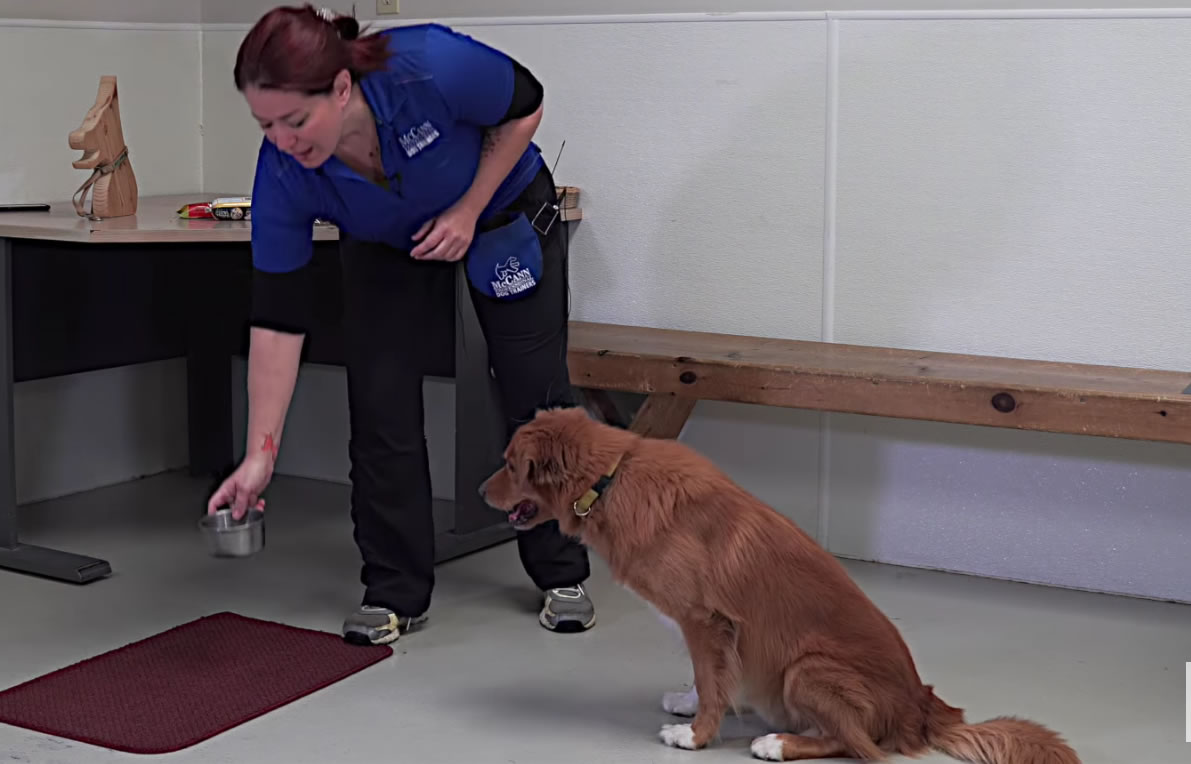![]() Listen to the Podcast
Listen to the Podcast
What I would like to talk about today is some bad advice that has been perpetually growing in dog training communities. What bad advice? This one: Ignore bad behaviour and it will go away. Try this technique - you may get lucky, but more than likely the bad behaviour you're trying to ignore will remain. It may even get worse.
 There's been a lot of changes in the way we train dogs over the last several decades. Definitely a lot of changes are for the better. We've become kinder. We've learned to view things from the dog's perspective and keep their well-being front of mind when teaching and training, but like with so many things, we go to extremes thinking that if a little is good, a lot must be better. It's got to be better to never say no, right? Never tell a dog they are wrong must be the way to go to create a happier dog, right? Quite frankly, this well-meaning, but poor advice is truly a huge detriment to our dogs. Don't get me wrong, I'm not advocating for the return of harsh methods, AT ALL, but all creatures need feedback that is clear and fair. I've written before about The Need for Meaningful Consequences and Meaningful Rewards in Training. With that in mind, today I'd like to talk about the idea that ignoring an unwanted behaviour will extinguish said behaviour. Let me tell you why that will not likely happen.
There's been a lot of changes in the way we train dogs over the last several decades. Definitely a lot of changes are for the better. We've become kinder. We've learned to view things from the dog's perspective and keep their well-being front of mind when teaching and training, but like with so many things, we go to extremes thinking that if a little is good, a lot must be better. It's got to be better to never say no, right? Never tell a dog they are wrong must be the way to go to create a happier dog, right? Quite frankly, this well-meaning, but poor advice is truly a huge detriment to our dogs. Don't get me wrong, I'm not advocating for the return of harsh methods, AT ALL, but all creatures need feedback that is clear and fair. I've written before about The Need for Meaningful Consequences and Meaningful Rewards in Training. With that in mind, today I'd like to talk about the idea that ignoring an unwanted behaviour will extinguish said behaviour. Let me tell you why that will not likely happen.
Let's Put This in a Human Perspective
What's that? Did you say dogs aren't little humans? You get an A+ for that! Dogs don't think like humans, but bear with me for a moment so we can try to examine the facts behind the myths.
Your daily commute takes you by several cops. You have a tendency to put your foot into the gas pedal and go well above the speed limit (do you see where I'm going with this?) Every morning, you speed by cops and they don't pull you over. They don't give you a ticket because they only acknowledge people who drive the speed limit. Do you think you will stop speeding? There are probably many people who will be pulled over and praised for going the speed limit, but that's not you - you like to speed! It's innately rewarding to you to go fast. What could the cops possibly give you that would motivate you to slow down? Maybe there's an amount of money that will convince you, but maybe not. This is where individual desires determine your continued behaviour.
I'm sure you understand the point I'm getting at.
Dogs Do What Is Rewarding
This is not up for debate. It's fact! Dog's will repeat behaviours that they find rewarding. This, of course, means that we can use food and toys in our training to build behaviours that are desirable for us. There are lots of things we can teach our dogs using positive reinforcement. It's an amazing and powerful motivator. Skills abound for the trainer who recognizes that they can teach their dogs using clear and positive methods - recalls, stays, walking on lead, tricks, you name it and there's a way to teach your dog to do it using positive motivations.
This is Part A of the equation.
My biggest intended takeaway from this article is that there are more parts - multiple quadrants in textbook terms, from which our dogs will learn!
In order for a behaviour to extinguish, we need to stop that behaviour from being rewarding because..... Dogs do what is rewarding.
Does your dog love food? Leave food accessible on the counter and let your dog investigate it just once and it could create a giant desire for your dog to repeat the behaviour of counter surfing. Does your dog love people? Allow them to investigate by jumping on one and it could create the habit of jumping on person-after-person. The reward for the dog is in the behaviour of jumping up. You may be able to convince some dogs to stop by only reinforcing the right behaviour, but most dogs will get their own reward, a self-reward, by jumping on the person. Therefore, it will always be a rewarding option for them. There's really little chance that they'll realize the error-of-their-ways and simply stop. Remember, the reward for the dog is still there. They're still being reinforced - even though it's not by you.
The Self-Reward or Conflicting Reinforcements
If you and your dog could live in a sterile, white room with zero competing motivators - no cats, squirrels, people, other dogs, wonderful scents in the air.... etc. we could all happily exist in a state of "yes" all of the time. After all, what else would your dog want to do in said room? Paying attention to you and your motivators may be attainable 100% of the time. The problem is, I don't want to live in that room and I want my dogs to be with me wherever I live. So, we open the door and enter the real world. In this real world, there are opportunities for self-reward. When we go for walks, there are other creatures of different shapes and sizes, wonderful scents and things to see!
This is exactly why we spend a lot of time in Part A of our equation. It would be extremely unfair and terrible dog training if I told my dog "no" without having given him the opportunity to know how to be right. We want to have skills that we can rely on to keep our dog happy and well-behaved. As an example, when I'm walking my dogs and we come across another dog, I will tell them "leave-it" pre-emptively. They have been extensively trained on the 'leave-it' command, know what they are to do when I say 'leave it' and my expectation is that they listen.
So what happens when the world isn't black and white? When there's a competing motivator? When my dog makes a mistake or a choice that is the wrong choice, Ie. I said 'leave it' and my dog decided to lean in and try to sniff the passing dog anyway. If my dog makes a choice that is in opposition of my expectations, I need to rely on Part B of the equation to help my dog. That involves saying 'no'.
There are Many Ways to Say "No"
This is where I bet you're asking how to say no, but that is a question with many, many variables.
Sometimes, a quick correction is all you need to convince a dog that they are not allowed to do something. There are certain things I consider to be very important for my dog's safety. One of them is the need for me to grant permission before my dogs are ever allowed to interact with other dogs. I've written about why this is important in an article titled, The Trouble with Dog-to-Dog Play. If my dog ignores my leave it cue, I have to help him understand that that is contrary to my expectations and therefore, wrong. As the human in the relationship, I'm charged with the task of keeping my dog safe. I take the responsibility very seriously.
Sometimes, saying no simply involves removing the dog from the situation. Sometimes saying no means invoking one of your other taught cues. For example, you have a dog who is obsessed with people. They are always happy to see guests and they show it! Sitting, staring at your guests as you try to visit, maybe bringing in a toy and trying to solicit play from your visitor. Do you think this dog will eventually lose this behaviour if you continue to ignore him? Likely not, and in fact, it may get worse as your dog continues to try to get your guest's attention. In this situation, I would say 'no' by removing the possibility of harassing my guest. This can be a 'go to your bed' cue or you might crate the dog if he's not well-trained enough yet to be able to do a bed-stay. This is good management technique with a young dog who doesn't have a lot of skills yet. Basically, I need to do something to STOP the offending behaviour from being self-rewarding.
Steps to Good, Clear Dog Training
There are many parts to the training equation. Be fair to your dog by being clear. Leaving them to flounder by only giving them half of the information will set yourself and your dog up for frustration. Here are the steps to good, clear training for your dog using the common problem of jumping up:
1 - Using good training techniques, build skills you can rely on. With an undesirable behaviour, like jumping up, I teach my dogs first to greet people from a sitting position. A dog who is sitting can't jump up! It's a physical impossibility. They can learn that the reward of greeting people comes with their butt on the ground. Using lots of great rewards in addition is a two-fold way of telling your dog that greeting without jumping is a win-win situation!
2 - Management with your dog comes next. In the example of jumping up, this would be a leash to physically stop (rather than ignore) the bad behaviour. Management is the tool to use in the time between learning stages. I need to stop my dog from developing a self-reward of jumping on people while he's learning. He won't have been born with the knowledge of my expectations, so I need to not only teach him good skills (step 1), I also need to stop him from rehearsing bad habits.
3 - Saying No! Dogs are imperfect as are we. With that in mind, there will be times you're caught off-guard and your dog tries to self-reward. This is where saying no is a must. This is where ignoring the mistakes could set you way back in your training. Remember, it doesn't need to be harsh. You simply need to remove the self-reward. Using a light correction downwards on the leash to remove the dog or even just physically preventing the dog from jumping up by placing a loose leash under your foot will, in conjunction with steps 1 and 2, give the dog the final bit of information they need to round out the behaviour.
Being fair involves being clear and addressing all sides of the issue. If your dog enjoys something that you don't, figure out how to address it from all three angles. The end result will be a happier and more confident dog who can enjoy the freedom that comes along with understanding and following the rules in life.
As always, Happy Training!
|
|
Hi! I'm Shannon and I joined the McCann team in 1999 while training Quincey, my wonderful and spirited Rottweiler, to have good listening skills. I'm the Director of Online Training and Content for McCann Professional Dog Trainers and I enjoy writing about dogs and dog training for the McCann blog. I currently share my life with 2 Tollers (Reggie & Ned) and I love helping people develop the best possible relationship with their 4-legged family members. Join us for a FREE lesson at MyDogCan.McCannDogs.com. |










